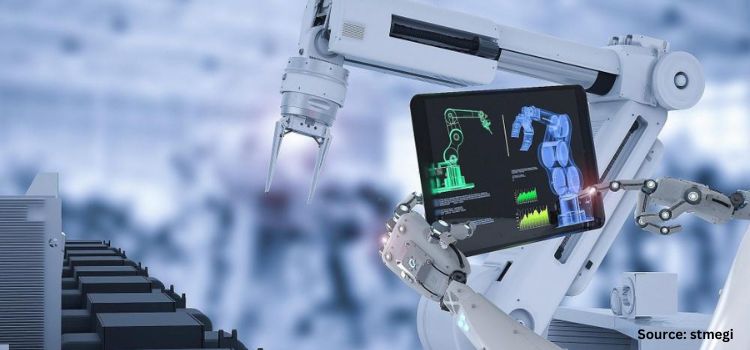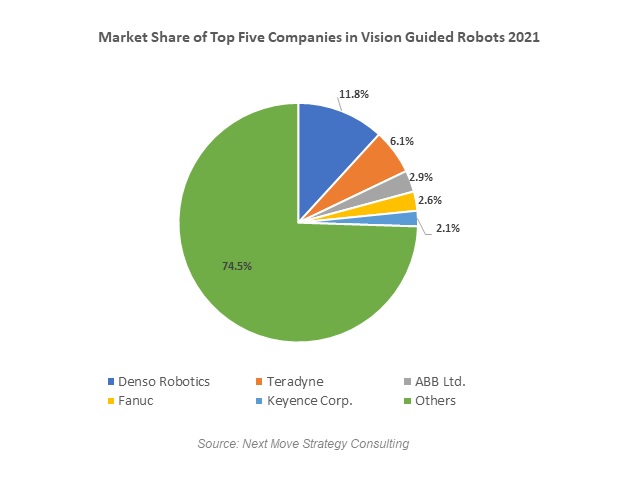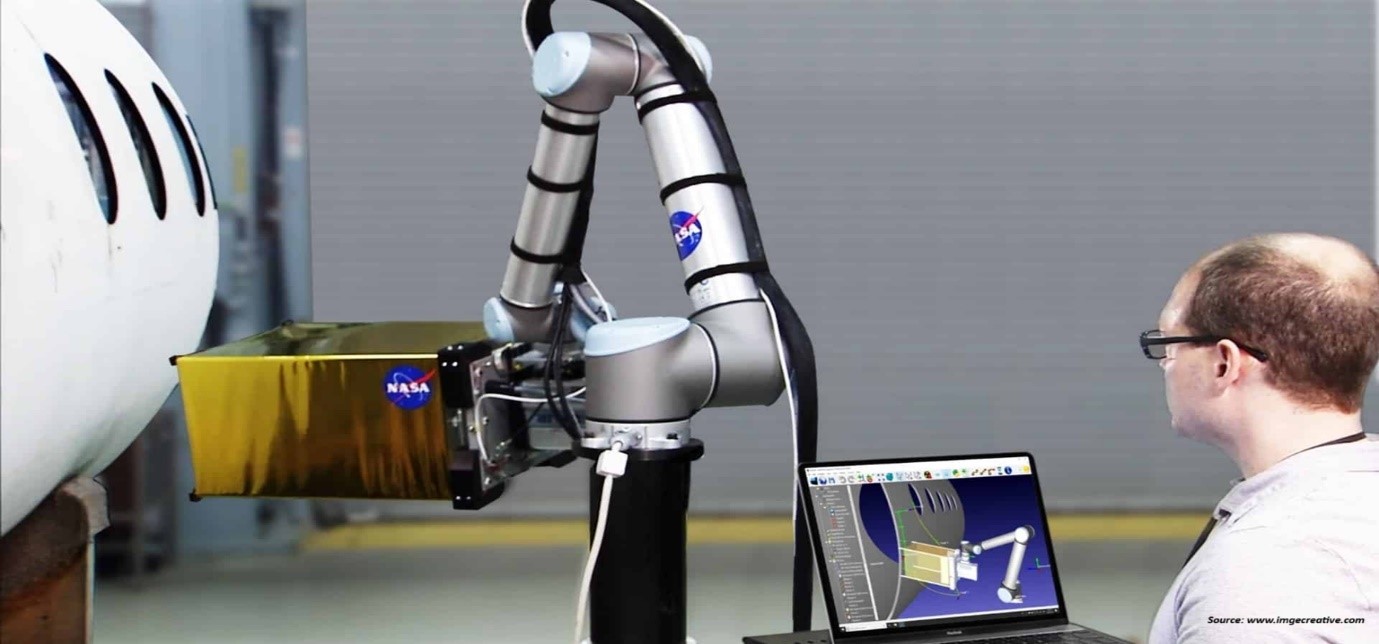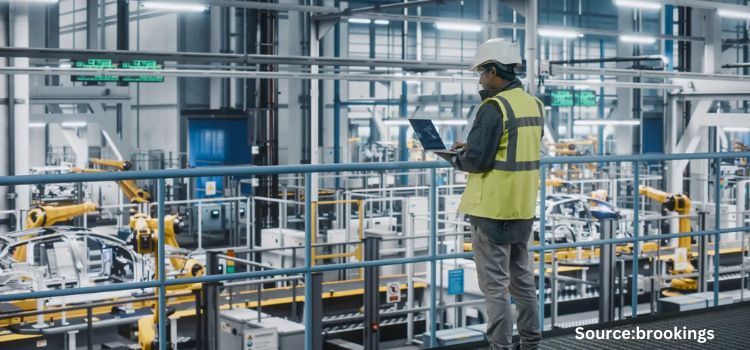All About Vision Guided Robots: What You Need To Know
18-Feb-2025

INTRODUCTION
A vision-guided robot (VGR) is a robot system that comprises a camera, sensors, and microprocessor or computer, with associated software. These robots provide accurate feedback signals about the ongoing situation to the robot controller. They are widely used for appearance inspection, dimension inspection, counting, as well as picking, and positioning.
The camera system can be divided into two broad categories, such as 2D and 3D cameras. 2D vision cameras capture an image of an object using a two-dimensional map of reflected intensity. It helps in barcode reading, label orientation, printing verification, and others. 3D cameras enhance utility, flexibility, and velocity to adapt to environmental changes while performing tasks including pick and place.
These robots are used in industries for quality control to check dimensions, angles, color, surface structure, and nearby object recognition. VGRs that use machine vision and image processing technologies have been extensively used in industries, such as automotive, aerospace, metal processing, and others to achieve high productivity without delays.
LET US EXPLORE VARIOUS TYPES OF VISION GUIDED ROBOTS
There are several types of vision guided robots available on the market, some of them are mentioned below:
Machine vision robots: These robots use cameras and image processing software to inspect and analyze parts or products. These robots can perceive their environment and can be programmed to follow specific objects, recognize patterns, and navigate through an environment using visual cues.
Inspection robots: These robots use cameras to inspect products for defects or to check for compliance with certain specifications. Inspection robots are robots that are specifically designed to inspect and monitor various types of equipment and infrastructure. They are often used in industries such as manufacturing, energy, and transportation. These robots can be equipped with a variety of sensors, including cameras, lasers, and ultrasonic sensors, to collect data and perform inspections.
Guiding robots: Guiding robots, also known as navigation robots, are robots that are designed to navigate and move through a specific environment. They can be equipped with various sensors, such as cameras and lidar, to perceive their surroundings and follow a predetermined path.
Pick-and-place robots: These robots use cameras to locate and pick up specific items and place them in designated locations. Pick-and-place robots use a robotic arm with a gripper or suction cup at the end effector to pick up objects. They are also equipped with machine vision systems, such as cameras and image processing algorithms, to locate and identify objects.
Surveillance robots: These robots use cameras to monitor and record activity in a certain area. Surveillance robots can be used in industrial and commercial settings, such as manufacturing plants, warehouses and ports, to monitor and inspect equipment and infrastructure. They can also be used to monitor and inspect hazardous environments, such as nuclear power plants and oil rigs, to keep workers safe.
Mobile robots: This type of robot uses cameras to navigate autonomously in an environment and perform various tasks. Mobile robots are designed to move around and navigate through a specific environment. Mobile robots can be classified into different types based on their mobility, such as wheeled, legged, and aerial robots.
Collaborative Robots: Collaborative robots are designed to work alongside humans, and they use vision to sense and avoid collisions. This allows greater flexibility in manufacturing and other processes, as robots and humans can work together to achieve a common goal.
Emerging Trends in Vision Guided Robots
Deep Learning-based Vision: With the advancement in deep learning, robots can now process images with a high degree of accuracy. This is enabling robots to perform tasks that were previously impossible, such as identifying and tracking objects in a cluttered environment.
3D Vision: 3D vision is becoming increasingly popular, as it allows robots to perceive depth and understand the shape of objects. This technology is particularly useful for tasks such as grasping and manipulation.
Augmented Reality: This type of technology uses cameras and displays to overlay digital information onto the physical environment. AR technology enhances the user's perception of the physical world by overlaying digital information, such as images, text, and 3D models, on top of the real-world environment.
Cloud-based Vision: Cloud-based vision systems are becoming increasingly popular as they allow for remote monitoring and control of robots, and enable data collection and analysis from multiple robots.
Overall, these trends are aimed at making vision-guided robots more versatile, efficient, and easy to use thus driving the growth of the market.
STATUS OF VISION GUIDED ROBOTS IN MAJOR ECONOMIES
Asia Pacific is extensively pushing the development and innovation in vision guided robots industry due to presence of countries such as China and Japan that possess robust electronics industry that uses vision-guided robots for component fabrication, pick and placement of parts, assembling miniature components on PCBs, applying adhesives, inspections, testing, and packing, that further boost the growth of the market.
In addition, expertise in robot manufacturing and high export volume in the region makes it a key player in the vision guided robot market, as it continues to deliver these robots to different parts of the world. For instance, Japan ranks first in terms of manufacturing industrial robots and it delivers robots in every part of the world. For instance, according to a report published by the International Federation of Robotics (IFR), in March 2022, Japan delivered 45% of the global supply of robots. The export ratio increased to 78% in 2020, where 136,069 industrial robots were shipped from Japan.
North America has made significant advances in the field of vision guided robots due to presence of a large number of pharmaceutical and automotive companies that use machine vision system to improve product quality, increase production efficiency, reduce errors and defects, and enhance worker safety which in turn drives the growth of the market.
Also, the presence of various manufacturers of vision-guided robots such as Cognex Corporation, Teledyne, Omron Adept Technology Inc, and Pleora Technologies Inc. in this region that are adopting strategies such as product launches to increase their market presence and dominance further boost the growth of the market.
For instance, in April 2022, Teledyne launched a line scan camera called Linea ML 8k, which is a multispectral camera that offers versatile capabilities that include spectrally independent Red, Green, and Blue (RGB) and Near-infrared (NIR) outputs.
COMPETITIVE LANDSCAPE
There are numerous companies that are engaged in the manufacturing of Vision guided robots. Some of the leading players are fortifying their positions through a range of strategies, including the introduction of new products, partnerships, collaboration, acquisitions, and others.
Next Move Strategy Consulting recognizes the top five market players in the field of vision guided robots. They are ABB, FANUC, Teradyne Inc, DENSO Robotics, Keyence Corp. and others.

Conclusion
Vision-guided robots uses machine vision technology for automating various industries and increasing efficiency in manufacturing and other processes. They also use cameras and image processing software to inspect, analyze, navigate, pick and place, and perform other tasks.
The market for vision-guided robots is expected to continue growing in the coming years, with the Asia-Pacific region holding the largest market share due to the high demand for automation in countries like China, Japan and South Korea. North America and Europe also have a significant market share. The increasing adoption of Industry 4.0 and the need for automation in various industries are driving the growth of the market.
ABOUT THE AUTHOR
S ikha Haritwal is a researcher with more than 3 years of experience. She has been keeping a close eye on several industry verticals, automotive & transportation, ICT & media, semiconductor & electronics. She has an avid interest in writing news articles and hopes to use blogs as a platform to share her knowledge with others. When she is not following industry updates and trends, she spends her time reading, writing poetry, cooking, and photography. The author can be reached at info@nextmsc.com
ikha Haritwal is a researcher with more than 3 years of experience. She has been keeping a close eye on several industry verticals, automotive & transportation, ICT & media, semiconductor & electronics. She has an avid interest in writing news articles and hopes to use blogs as a platform to share her knowledge with others. When she is not following industry updates and trends, she spends her time reading, writing poetry, cooking, and photography. The author can be reached at info@nextmsc.com
Add Comment
Related Blogs
How Collaborative Robots (Cobots) are Enhancing Human-Robot Collaboration in Warehouses?
Collaborative robots are used in warehouse operations to rev...
Leaders in Automation Kion, Honeywell, and ABB Influence on the Warehouse Market
Next Move Strategy Consulting forecasts that the Warehouse A...
Unveiling the Top 10 Innovators in the Global Robot Vacuum Cleaner Sector
Next Move Strategy Consulting states that the global robot v...











